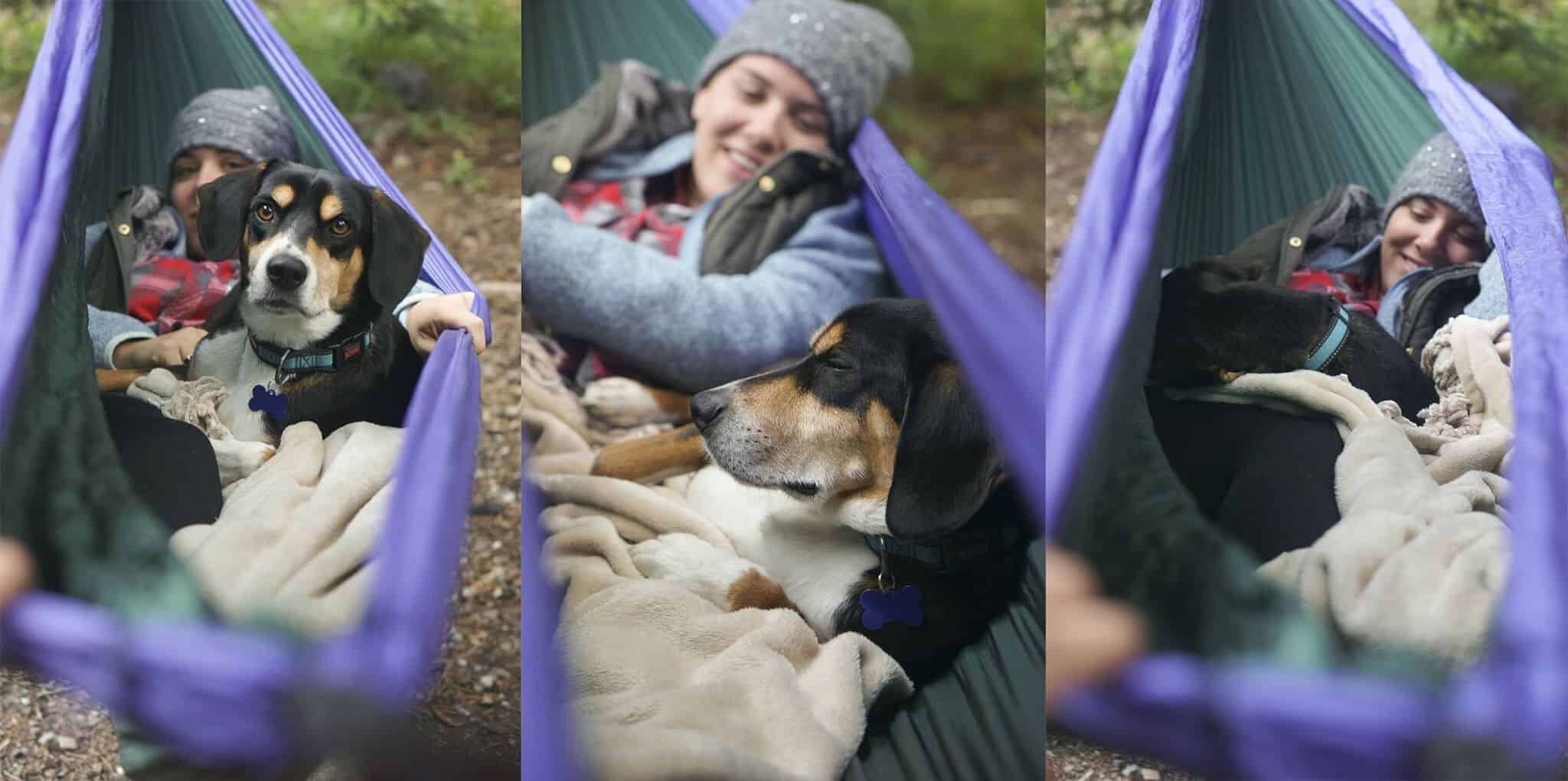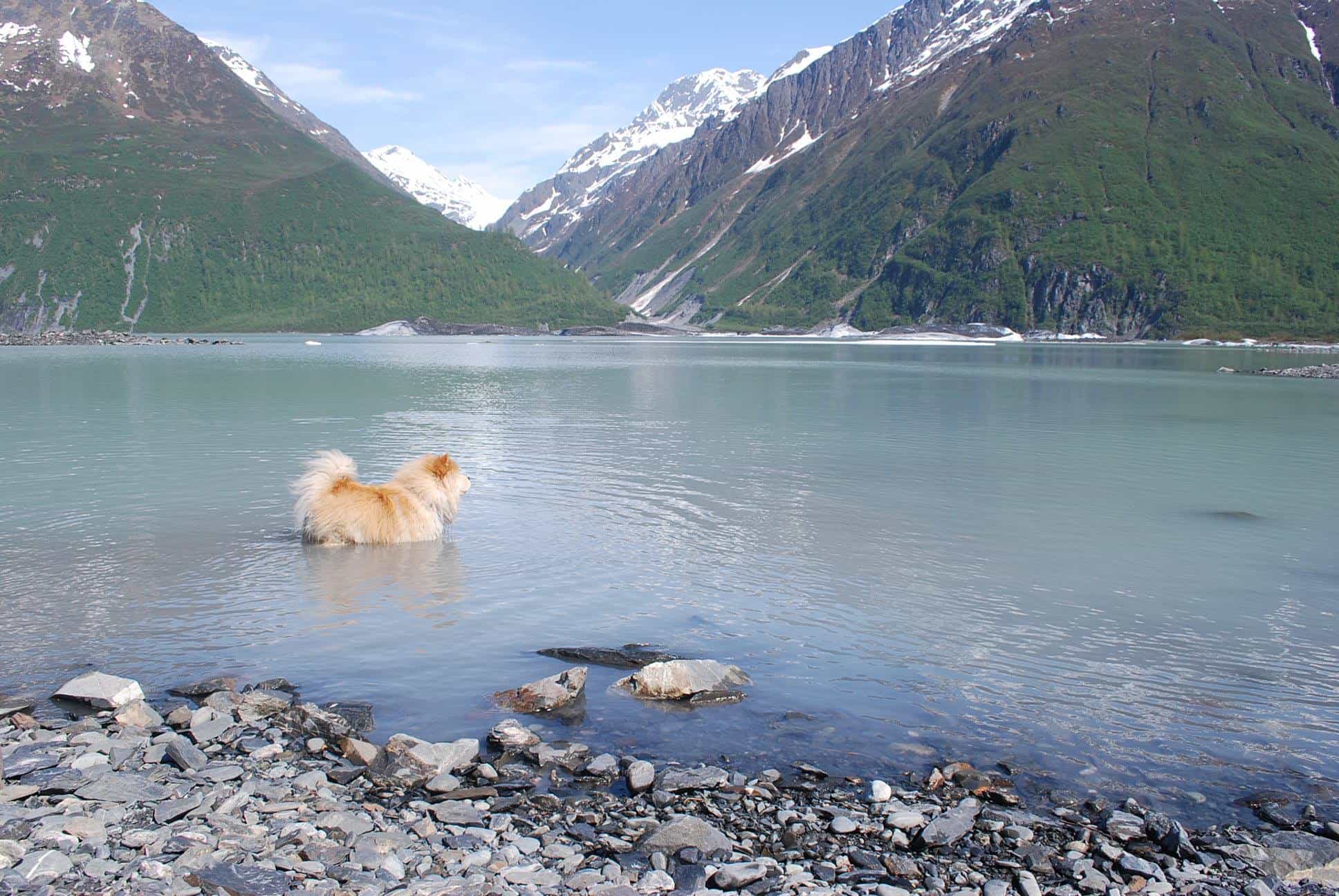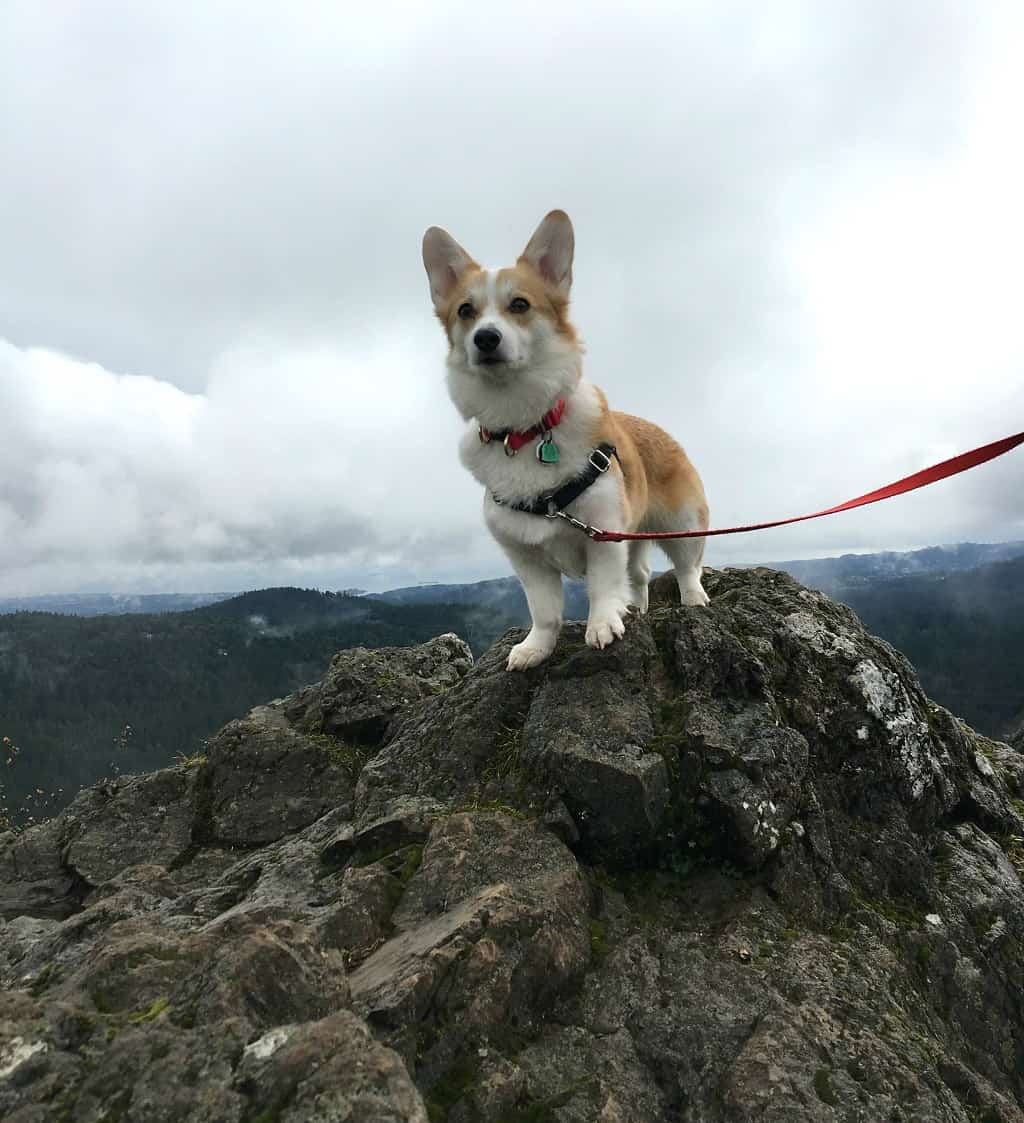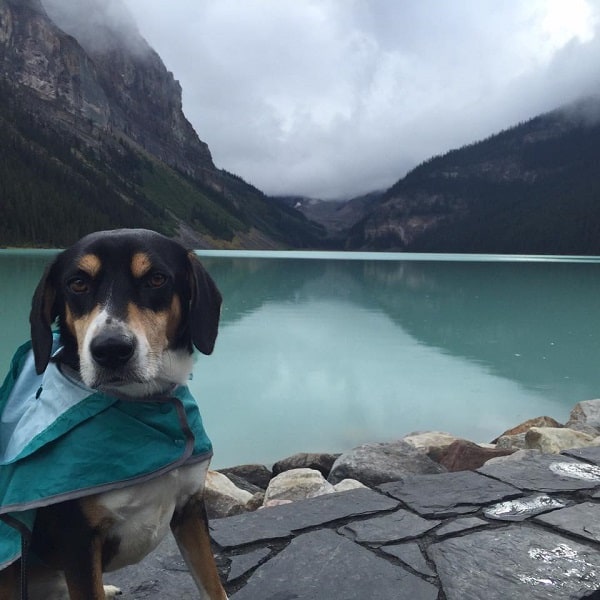How to Prepare, What to Pack, and Campsite Safety for a Fun Outdoor Adventure with Your Dog
At Redfin, we know that sometimes your home away from home is a tent hidden in the woods. And it wouldn’t feel like your second home without your dog by your side. With summer in full swing, Redfin has compiled the ultimate safety guide for camping with your dog! Camping with your dogs requires a bit of preparation and safety precautions to ensure that you and your dogs can enjoy a safe and fun outdoor adventure – but we’re here to help! We’ve covered important health and safety precautions as well as how to pack the right safety and comfort essentials for your beloved furry family members, and will arm you with important safety tips and information to keep your dogs safe at and around your campsite.
What You’ll Find in This Guide:
- Before You Go: Health Checkups and Safety Supplies
- Packing for Your Dog
- Dog-Safe Best Practices at the Campsite

Before You Go: Health Checkups and Safety Supplies
This section covers all the know-before-you-go information that you should take care of before planning a camping trip with your dog, preventative veterinary care tips, and more.
First things first: schedule a visit to the veterinarian for a health checkup. If your dog’s health isn’t optimal, ordinary camping hazards can quickly become serious dangers, so you should discuss your camping plans with your veterinarian. If you plan to take your dog backpacking, you’ll want to make sure that your dog is up to the task physically. Aging or chronically ill dogs may not be physically able to keep up with a daunting trek, so it might be wise to leave Fido with a trusted caregiver in such a scenario.
Check your dog’s records or double-check with your regular veterinarian to ensure that you’re on top of all preventative care, such as core vaccinations like the Rabies vaccine, as it’s possible that your dog may encounter a wild animal with the disease in the great outdoors.
Pests such as fleas and ticks are often common in the wooded areas many people favor for camping. Consider having your dog vaccinated for Lyme disease and make sure that he’s been treated with flea and tick prevention. Additionally, heartworms are transmitted through mosquito bites, so make sure your dog’s preventative heartworm treatment is current for optimal protection.
Pack a first-aid kit with essentials. A few must-have supplies for dogs include:
- Vet approved painkiller – Talk to your vet about getting an approved painkiller for your pet. Some recommend coated aspirin for pain, however, you should consult with your vet first. Use with caution and give only the recommended dosage (between 5mg and 10mg per pound of body weight). You may also consider a safer alternative, but your best bet is to discuss it with your veterinarian before your trip for specific advice.
- Tweezers or tick removal tools and scissors
- Butterfly bandages, gauze, and/or bandages designed for pets to close wounds.
- Rubbing alcohol or antiseptic to clean wounds.
- First aid gel or spray designed for pets.
If your pet takes medication regularly for a chronic health condition, take enough medication for the duration of your trip, plus enough to last at least a few extra days. You never know what you’ll encounter in the wilderness, so it’s better to be safe than sorry. Take copies of your dog’s health records, including vaccination history, and locate the veterinary clinic closest to your campsite before you leave. Save or print the phone number and directions so that they’re easily accessible in case of emergency. Finally, make sure that your dog’s microchip registration is up to date and that your pet has a tag with complete and accurate information so that finders can easily locate you should your dog get lost. If you know ahead of time that you may not have reliable wireless service, you might also consider adding your veterinarian’s phone number or the contact information for a trusted friend or relative.

Packing for Your Dog
This section covers the essential packing list for camping with your dog, including supplies for nutrition, water safety, and just plain fun.
You’ll need more than first-aid supplies for a camping trip with your furry friend, of course. You’ll want to pack your dog’s food and water dishes, as well as enough fresh water to last the duration of your trip plus a few extra days, unless you’re camping at a site with a readily-available supply of fresh water. If it’s going to be warm, keep in mind that your dog may need to drink more water than usual. Take an ample supply of your dog’s regular food and treats, as well. Your dog will have to do his or her business as usual, so you’ll need a good supply of dog waste bags to keep your campsite free of waste and avoid disgruntled fellow campers.
You’ll also want to pack a leash or two, as well as whatever supplies you’ll need to tether your dog while outdoors. Pack your dog’s bed so that he or she can get a comfortable night’s rest. Some dogs prefer to sleep in their crate, but it’s a good idea to take a dog crate or carrier regardless in the event that you need to confine your pup. If the weather will be cooler in the evenings, pack blankets or a dog jacket to keep your furry friend warm in the elements. If you’re heading to a destination near water, a dog life preserver is a good idea, as well as plenty of extra towels to dry your dog off after a swim.
Don’t forget about enrichment. Does your dog have a favorite toy? Take a few trinkets such as balls, frisbees, and squeaky toys to keep your dog entertained. The other items you’ll need to pack for your dog depend on your plans. If you plan on going hiking, for instance, you’ll want a portable water dish that you can easily store in your backpack to keep your dog hydrated throughout the day.

Dog-Safe Best Practices at the Campsite
This section provides helpful tips for monitoring your dog’s health and maintaining a safe environment for your dog and other campers.
Many campgrounds require that dogs be leashed at all times. Make sure you know and understand the rules if you’re heading for a managed campground; some even specify the maximum lead length permitted. Some campgrounds prohibit dogs altogether, while others place limits on the size or number of dogs permitted. Researching before you go is a must.
Keep an eye on your dog’s well-being throughout your trip. If the weather is hot and humid, you can bet your dog is feeling the heat, too. Watch for signs of heat stroke, such as excessive panting, excessive drooling or foaming at the mouth, weakness, vomiting, diarrhea, tremors, or seizures. If you suspect your dog has heat stroke, wrap your dog in a towel soaked in cool water and get her to a veterinarian immediately.
Ideally, you’ve already spent time training your dog, but if your dog isn’t the most well-trained pup in the pack, it’s a good idea to start slowly, taking a few short trips to see how your dog fares when exposed to the many new experiences he’ll have during a camping trip. The many sights, sounds, people, and scents can send even well-trained dogs into a flurry of excitement, so testing the waters and learning how to work with your dog to manage behavior will ensure not only his or her safety, but the safety of fellow campers and animals, both domestic and wild.
At minimum, your dog should obey a few essential commands, such as “sit,” “stay,” and “leave it.” If you don’t know how your dog will react to strangers, particularly excited children, use extreme caution until you’re comfortable with your dog’s temperament in new situations. These commands will come in handy for situations such as encountering poisonous plants or other hazardous substances; a dog who obeys the “leave it!” command will be much more easily redirected than a dog who can think of nothing else but devouring those delicious-looking leaves or berries. You should do your research to know which plants your dog must steer clear of and how to identify them in order to be proactive about keeping your dog away from these dangerous plants.
Above all, have fun! A camping trip is a great opportunity to kick back and relax. When you take the proper precautions and keep safety top-of-mind, a camping trip is an enjoyable bonding experience for humans and dogs alike.

Resources on Safe Camping with Dogs
This section provides valuable resources on dog health, camping safety, and other essential information for a safe and enjoyable camping trip with your furry friend.
Camping with Dogs offers a wide range of articles about camping safely with your dog.
Ruffwear’s Blog provides advice on all types of outdoor activities with your dog and products to keep them save.
IHeartDogs.com provides 12 important safety tips for camping with your dog.
The ASPCA offers a comprehensive guide to vaccinations for your dog, including information on core and non-core vaccines, regulations and risks associated with vaccination, and how to determine the proper vaccination schedule for your dog.
GearJunkie is an excellent resource for discovering the essential outdoor gear your dog needs for a fun outdoor adventure.
Dogster.com also covers some common outdoor risks for dogs, including helpful tips for helping your dog cope with anxiety from thunderstorms, preventing poisoning, and other helpful advice.
Even in the warmer months, when the sun goes down, the chill can set in. The American Veterinary Medical Association offers helpful cold weather safety tips for dogs and other pets.
CampTrip provides a useful guide for first-time camping with your dog, including tips for getting your dog in tip-top physical shape before your trip, acclimating your dog to tents, and more.
Mother Nature Network offers helpful advice for camping with your four-legged friends, including an informative discussion on determining whether your dog’s temperament is well-suited for camping.
The Humane Society provides a comprehensive list of what to include in a first-aid kit for your dog.
BarkPost names 10 ideal, dog-friendly camping destinations that are surely on every dog’s bucket list.
The Pet Poison Helpline provides a handy list of 10 plants poisonous to pets. Knowing how to identify the plants that your dog must avoid is essential for a safe and enjoyable camping experience.

 United States
United States Canada
Canada